The History of Air Racing
Photos & Records
1929 National Air Races and Aeronautical
Exposition
Clifford Henderson brought the faltering National Air Races
to Los Angeles Mines Field in September of 1928. He also added
an Aeronautical Exposition to showcase the latest in aircraft
and related equipment. The 1928 National Air Race was a major
improvement over previous exhibitions held at non
spectator-friendly military bases. A number of Cleveland
city
officials along with business leaders traveled to Mines Field to
see if the races might benefit Cleveland's position as the
aviation capitol of the country. They were favorably impressed and succeeded in bringing the next year's event to Cleveland.
1929 would be a quantum leap in quality and a much-needed public
exposure of aviation in general.

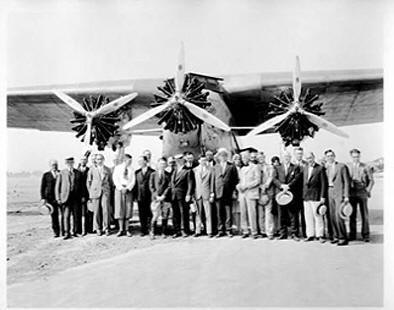
Race
officials photo op.
Committee members
and airport officials
gather in front of Richland Oil Company's
luxury appointed Fokker F -10.

The size and
facilities of the Cleveland Airport were among determining factors
which enabled Cleveland to get the National Air Races here for the
first time in
1929. The airport was the first municipally owned in the country. It
was large
enough to host the races on the west end of the airfield without
interrupting normal
commercial traffic at the east end. A state-of-the-art passenger
terminal building
had just been opened, complete with beautiful landscaping. Many new
hangars and
support buildings were either complete or under construction.
The city of Cleveland
spent $450,000 in conditioning the airport for the races.

New Passenger Terminal

One of many new hangars
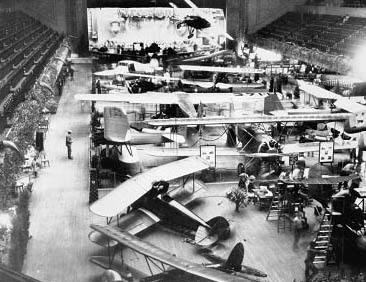
Expo The Aeronautical exposition
was held in the new $10 million Public Hall.
Nearly every manufacturer of aircraft and
allied industries were represented in the
200,000 sq. ft. of floor space. Exhibitors
displayed $3 million worth aircraft motors
and accessories.

Cliff Henderson, a talented
musician and college
orchestra leader wrote the lyrics for the races
theme song "On Wings of Love" sung every
evening at 11:00pm by Marie De Ville
a regular
singer on radio station WTAM.
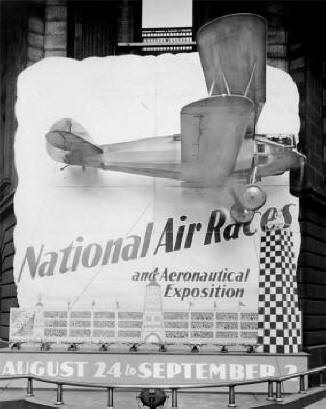
Cleveland built
A full size Great Lakes trainer was
suspended
at the display area of
the Cleveland Trust Bank
on the
corner of East 9th and Euclid Ave.
As
a promotion of the National Air Races.
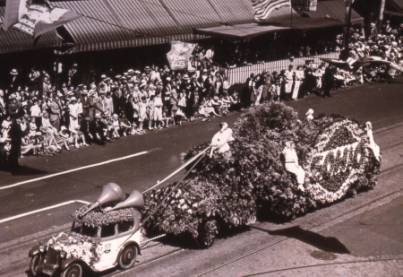
Parade in downtown Cleveland
On the day prior to the
opening of the races, a very large
parade was held on the main street of downtown Cleveland,
The Cleveland Plain
Dealer reported; "300,000 downtown see
5 miles of flowers mark city's
welcome" Overhead, an armada
of military and civilian aircraft accompanied
the parade.

(Mark Braunich collection)
Great Lakes
Aircraft Company located on Cleveland's
east side also displayed one of their trainers on a parade float.
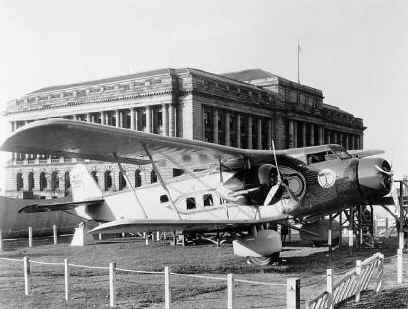
Boeing
The Boeing
Aircraft Company sent
it's newest tri-motor Transport, the Model 80A;
prior to it's entrance into airline service.
The new Boeing was the major attraction of
the Expo. pictured here on display outside of
Cleveland City Hall.
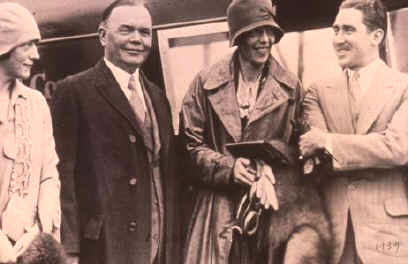
Celebrities
Cleveland City Manager
William Hopkins with Amelia Earhart,
Ed Thompson, and Mrs. Ed Thompson.
Many
dignitaries and movie stars were in attendance,
national hero Charles Lindbergh and Commander
Hugo Eckner of the Graff Zeppelin, to name just two.
Pilot Jimmy Haizlip said "the whole of aviation was
there
and you could have put them all in a dance hall
and have half of it left over"
.
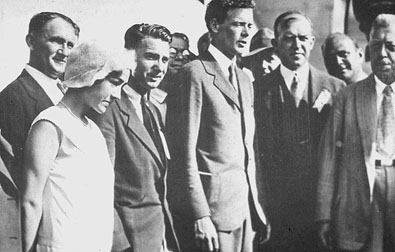
The daily schedule included other aviation
attractions such as parachute jumping, military
demonstrations, lighter than-air craft, air derbies
and aerobatics demonstrations. Coupled with the
Aeronautical Exposition and concerts, this was a
major entertainment spectaCle and a much needed
public exposure of military and civilian aviation.
Women pilots
were making
their presence known
known and wanted to be part of the National Air Races.
A first ever air derby was created for women pilots
only, sponsored by The National Exchange Club the
cross country race would start at Clover field Santa
Monica CA. and finish at Cleveland. The women were
given nine days to reach the races already in progress.
The winne would be the pilot with the shortest time in
the air. The two divisions, were based on engine size.
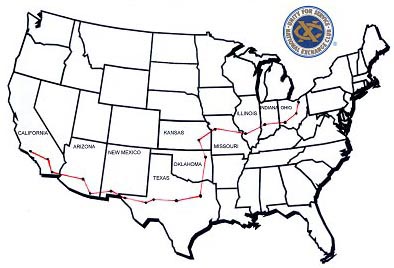
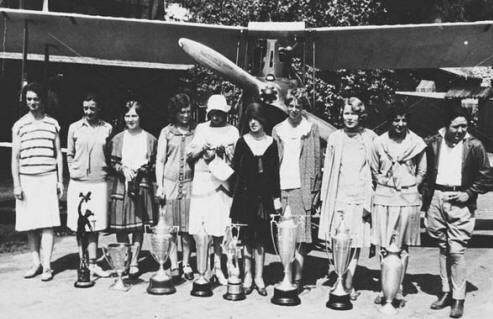
Twenty
women pilots including two foreign entries
started the race, most flying open cockpit biplanes.
A small number were seasoned pilots while most had
only limited flying experience. At the time of the race
there were just over 100 licensed female pilots in the US.
Start of the Women's Air derby
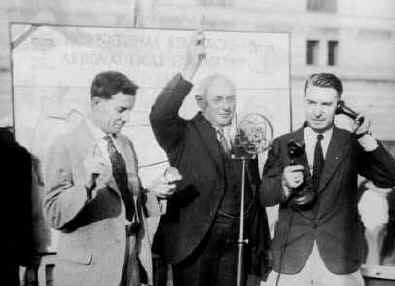
Chairman Floyd J. Logan,
Louis W. Greve,
President of The Cleveland National Air Races
holding the starting gun and Cliff Henderson in
contact with Clover Field by phone.

Louise Thaden,
was the first to cross the finish
line at Cleveland with the shortest time in the air.
Louise won the Women's Air Derby (Class D division)
in a new Travel Air sponsored by Walter Beech.

Phoebe Omlie was the
winner of (Class C division)
in a Monocoupe.
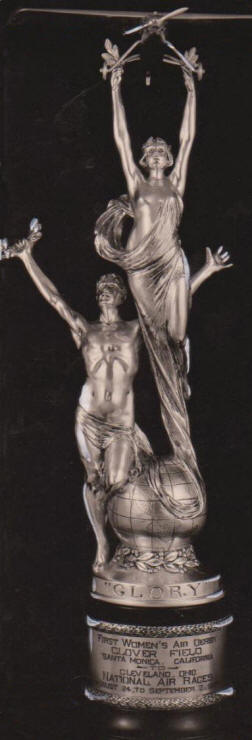
Women's Air Derby Trophy
Class D 510 to 800 cu. in.

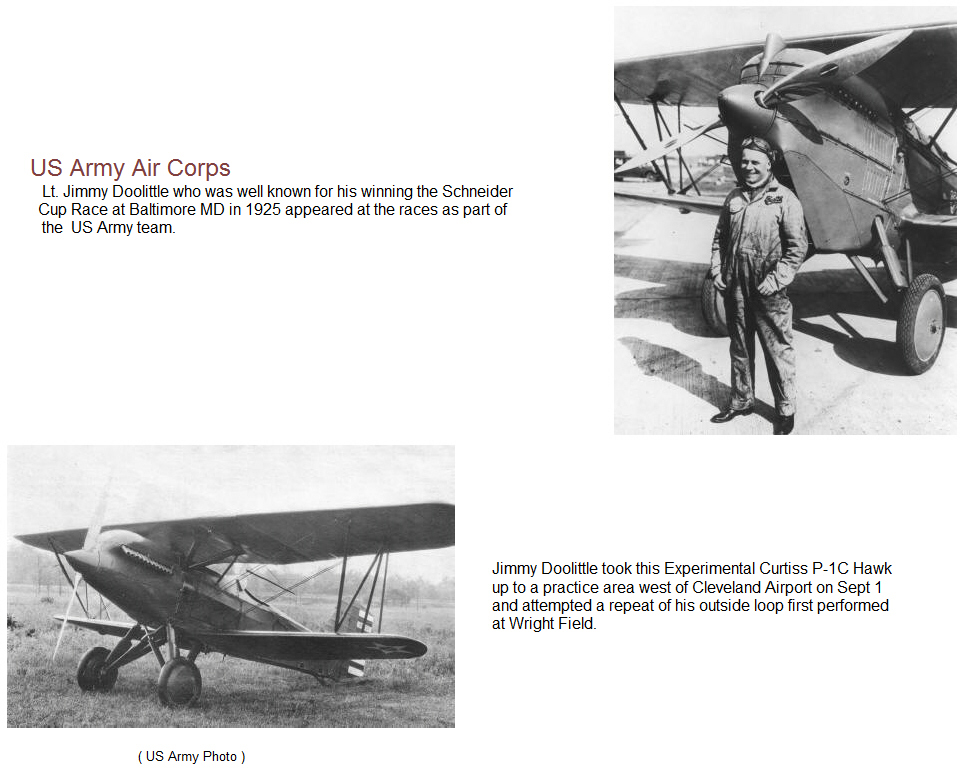

Trophies
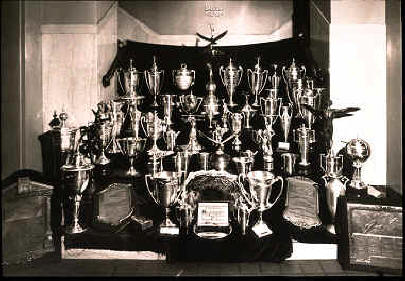
The forty plus trophies on display at the Expo in Public Hall
Event No 26
Free-for-all Speed Contest
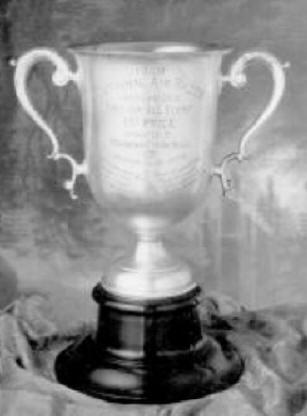
The Thompson Cup
While the military dominated the previous National Air Races, this
year would be different.
Walter Beech, President of the Travel Air Manufacturing Co. in
Wichita
along with two of
his engineers developed two low-wing monoplanes with great speed
potential to enter
in the NAR. Original design called for a new inline engine. Two
examples were built, one
with the new Chevrolair inline engine and one with a Wright radial
engine. Tests reviled
the inline engine did not perform as expected but both were flown to
Cleveland and entered.
Walter Beech himself flew one of the two. During construction these
aircraft were built in a
hangar restricted to employee's only . Walter did not allow any
media people to see the
construction, so the press called them “Mystery Ships”. As soon as
the planes landed in
Cleveland, they were rolled into the a hangar with the windows
covered and doors closed.


"Mystery Ship" with Chevrolair Engine "Mystery Ship" with Wright
Radial engine

On Sept. 2nd, Doug Davis, an
airline pilot from Atlanta, Georgia,
flying the Travel Air "Mystery Ship", won event no. 26, the 50-mile
free-for-all speed contest. During the race, Davis cut inside one
of the pylons and had to re cirCle it but still managed to beat both
the Army's and Navy's fastest pursuit planes. Charles Thompson,
president of Thompson Products Company, sponsor of the event
personally, awarded the large cup to Doug Davis. Second place
went to Lt. Breen in a Army P-3A. Third place went to Roscoe
Turner in a Lockheed Vega.
